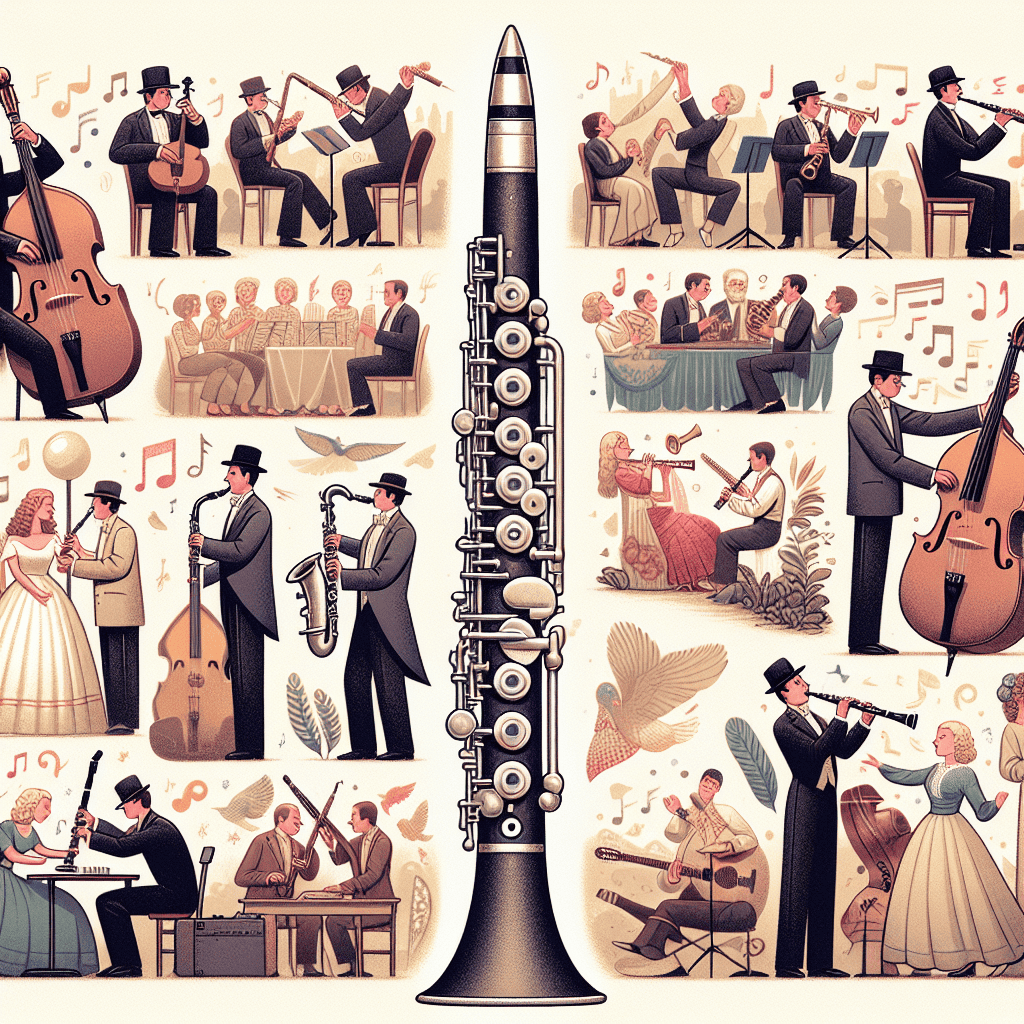The clarinet family is a diverse group of woodwind instruments that play a vital role in various musical styles and settings. Whether you're a clarinetist or simply interested in music, understanding this instrument family can enrich your musical knowledge. From symphonic orchestras to lively jazz ensembles, the clarinet family's distinctive sound and range add depth and character to performances.
The Basics of the Clarinet Family
The clarinet family comprises several instruments, each with its own unique role and sound. Let's explore the main members:
- Bb Clarinet: The most widespread type, frequently used in orchestras, bands, and various ensemble settings. It produces a warm, rich tone.
- A Clarinet: Similar to the Bb clarinet but pitched slightly lower. Orchestras often prefer it for its smooth sound.
- C Clarinet: Less common than its Bb and A counterparts, it's used in some orchestras and small ensembles. It's known for its bright sound.
- Alto Clarinet: A larger, lower-pitched instrument that brings depth to the woodwind section. It's tuned in Eb.
- Bass Clarinet: A larger clarinet with an extended lower range, producing a rich, resonant tone. It often takes on solo roles as well.
- Contrabass Clarinet: The largest in the family, it plays even lower than the bass clarinet, adding a unique depth to orchestral pieces.
| Clarinet Type | Key | Typical Range | Common Use |
|---|---|---|---|
| Bb Clarinet | Bb | E3 to C7 | Orchestras, Bands, Jazz |
| A Clarinet | A | E3 to C7 | Orchestras |
| C Clarinet | C | E3 to C7 | Some Orchestras, Small Ensembles |
| Alto Clarinet | Eb | Eb3 to C7 | Concert Bands |
| Bass Clarinet | Bb | Bb1 to F5 | Orchestras, Chamber Music |
| Contrabass Clarinet | Bb | Bb1 to D5 | Orchestras, Ensembles |
Distinctive Characteristics of Each Instrument
Each clarinet type has unique features that shape its sound and role in music:
Bb Clarinet
- Typical Range: E3 to C7
- Warm, versatile sound that fits various genres from classical to jazz.
- Often made from Grenadilla wood or plastic for durability.
A Clarinet
- Typical Range: E3 to C7, sounds a minor third lower than the Bb clarinet.
- Commonly used in orchestras for pieces in the key of A.
C Clarinet
- Less common, with a bright, distinctive sound.
- Typical Range: E3 to C7; used in certain orchestral and educational settings.
Alto Clarinet
- Typical Range: Eb3 to C7
- Produces a mellow tone, often featured in concert bands.
- Larger than the Bb clarinet, contributing to its deeper sound.
Bass Clarinet
- Typical Range: Bb1 to F5
- Rich, round tone that can stand out as a solo instrument.
- Used in orchestras, chamber music, and contemporary compositions.
Contrabass Clarinet
- Typical Range: Bb1 to D5
- Produces very low, resonant tones.
- Adds depth to orchestral works and creates unique textures in ensembles.
The Role of Clarinets in Various Genres
Different clarinet types shine in various musical styles:
- Classical: Bb and A clarinets are common, with bass clarinets often featured in symphonies.
- Jazz: The Bb clarinet is a key player, adding expressive tones to improvisational pieces.
- Dixieland and Traditional Jazz: Clarinets, like those played by Sidney Bechet, bring energy and melodic focus to these styles.
- Marching Bands: Bb clarinets are popular due to their lightweight design and bright sound that carries well outdoors.
Caring for Clarinet Family Instruments
Proper maintenance is essential to keep your clarinet in top shape:
- Regular Cleaning: Remove moisture and debris from pads and keys. Always swab the instrument after playing.
- Repadding Keys: When you notice sound inconsistencies or leaks, it might be time for new pads.
- Annual Check-ups: Have a skilled technician inspect your instrument yearly to ensure it's in good condition.
Each clarinet type brings its own special qualities to music, both in terms of sound and performance. Musicians at all levels can gain valuable insights by exploring these instruments and understanding how they work together in different musical settings.







